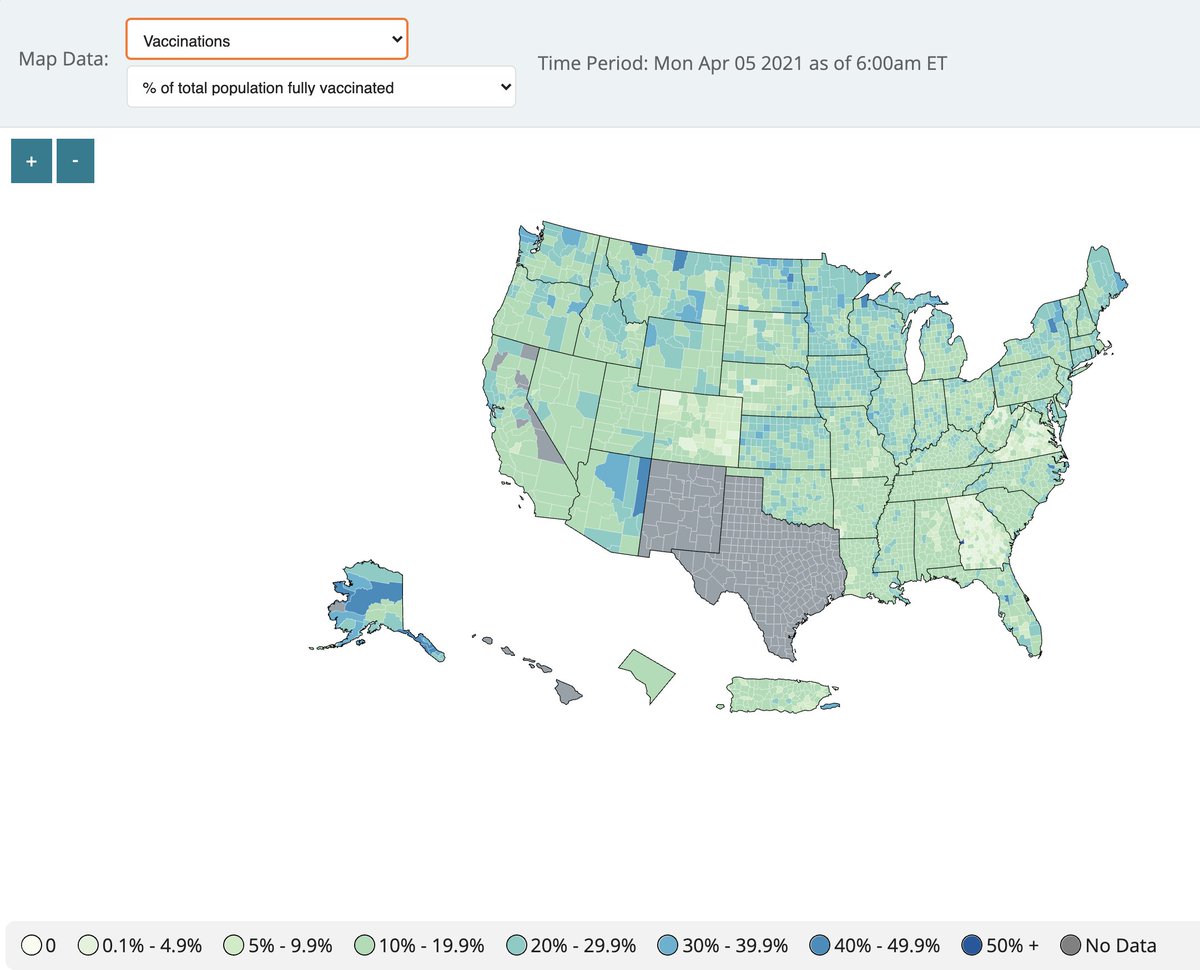
During this holiday weekend and beyond, consider not just your own vaccination status but that of your community and neighboring communities when you make decisions about activities. Vaccination remains highly heterogeneous across the United States. A short thread. (1/ 

If you're fully vaccinated, you've done your part to protect yourself-- congratulations! As you consider social activities, be sure to consider the rates of vaccination in your community. You can check out your community's vaccination rate at vaccinetracking.us. (2/
If you are a vaccinated individual in a low-vaccination community, you remain at risk for being infected. If you are infected, it's more likely that you'll silently spread infection (including variants) to others (given the vaccines' high efficacy for reducing severity). (3/
You might also be at further risk if the communities around yours have low vacc rates. Mobility between locations is high and their risk is your risk. Below are the current low vacc clusters. Communities within a cluster will more easily support transmission than others. (4/ 

So, this holiday weekend and during this summer, track your own risk in light of your community's risk. Mask up and social distance to continue protecting yourself and others while having fun safely. Happy 4th, y'all! 🇺🇸🎇
• • •
Missing some Tweet in this thread? You can try to
force a refresh




